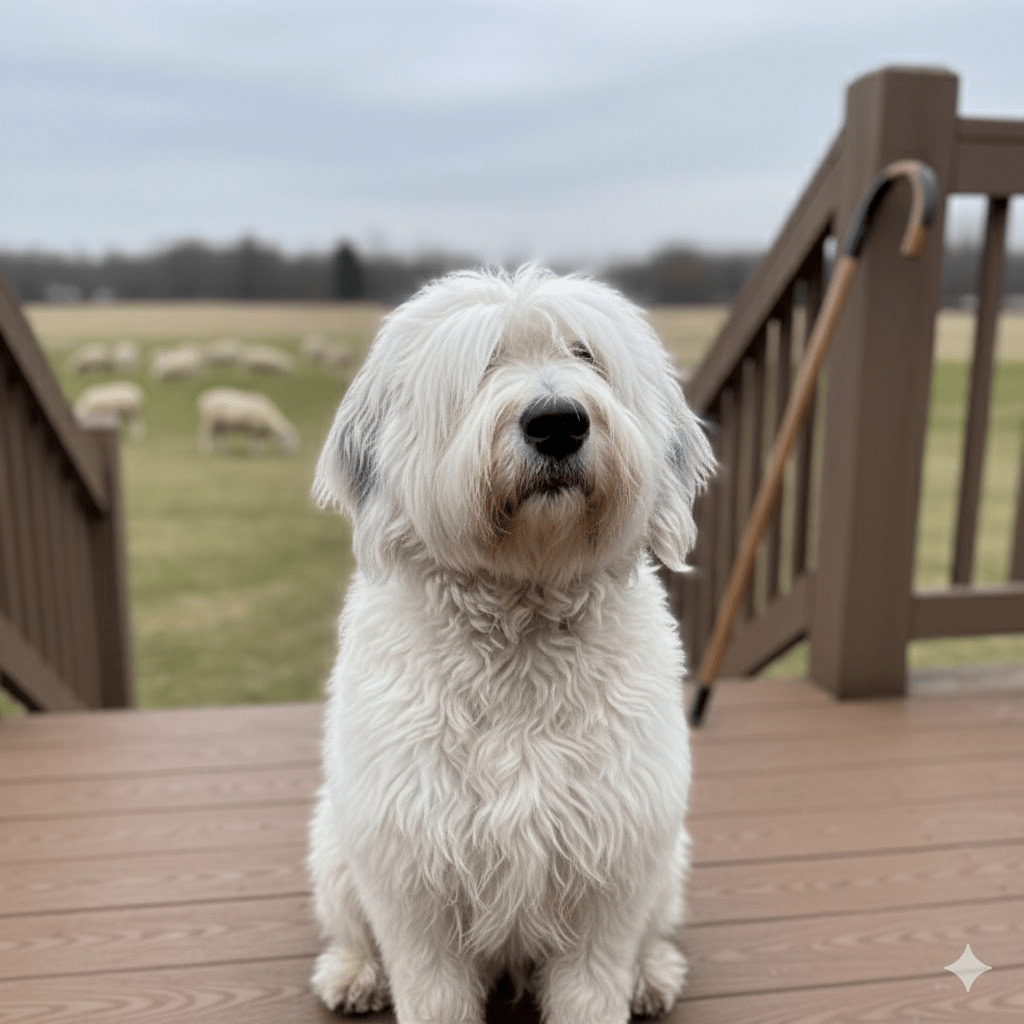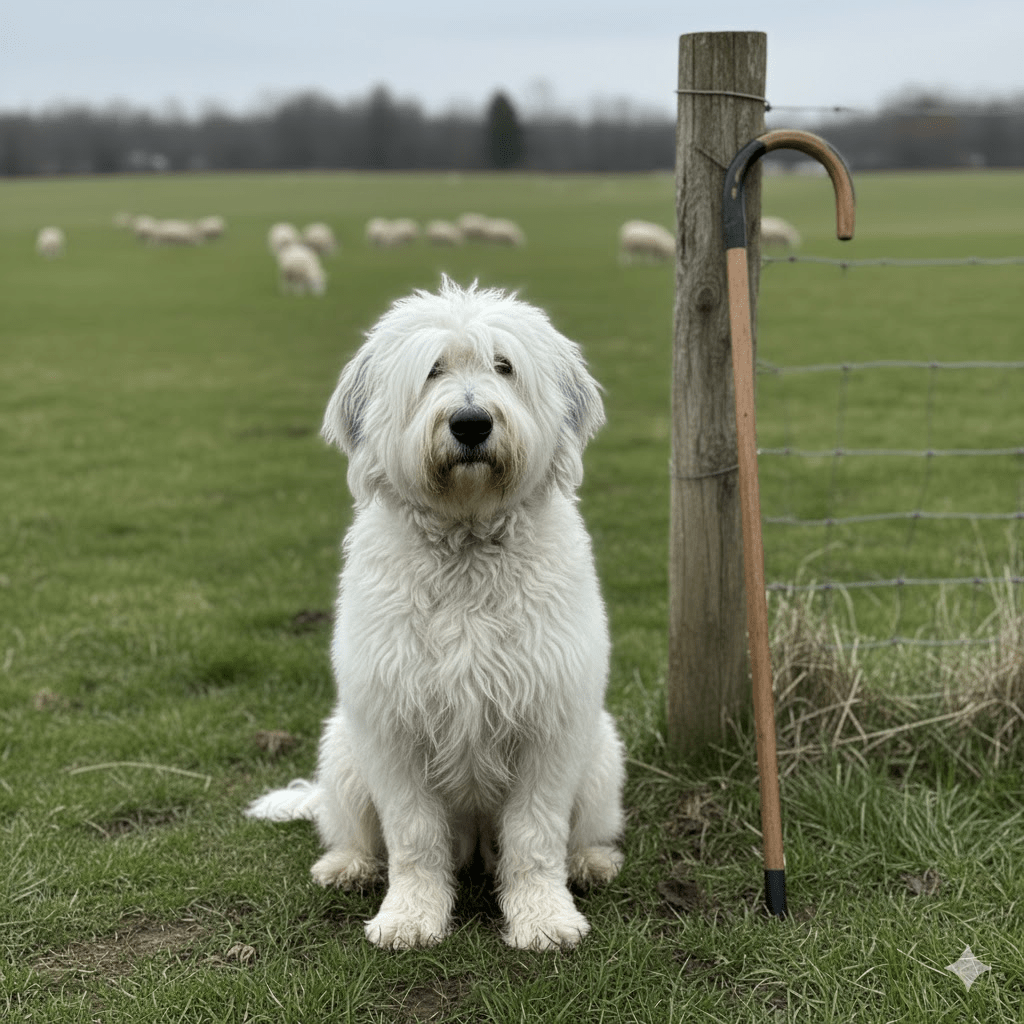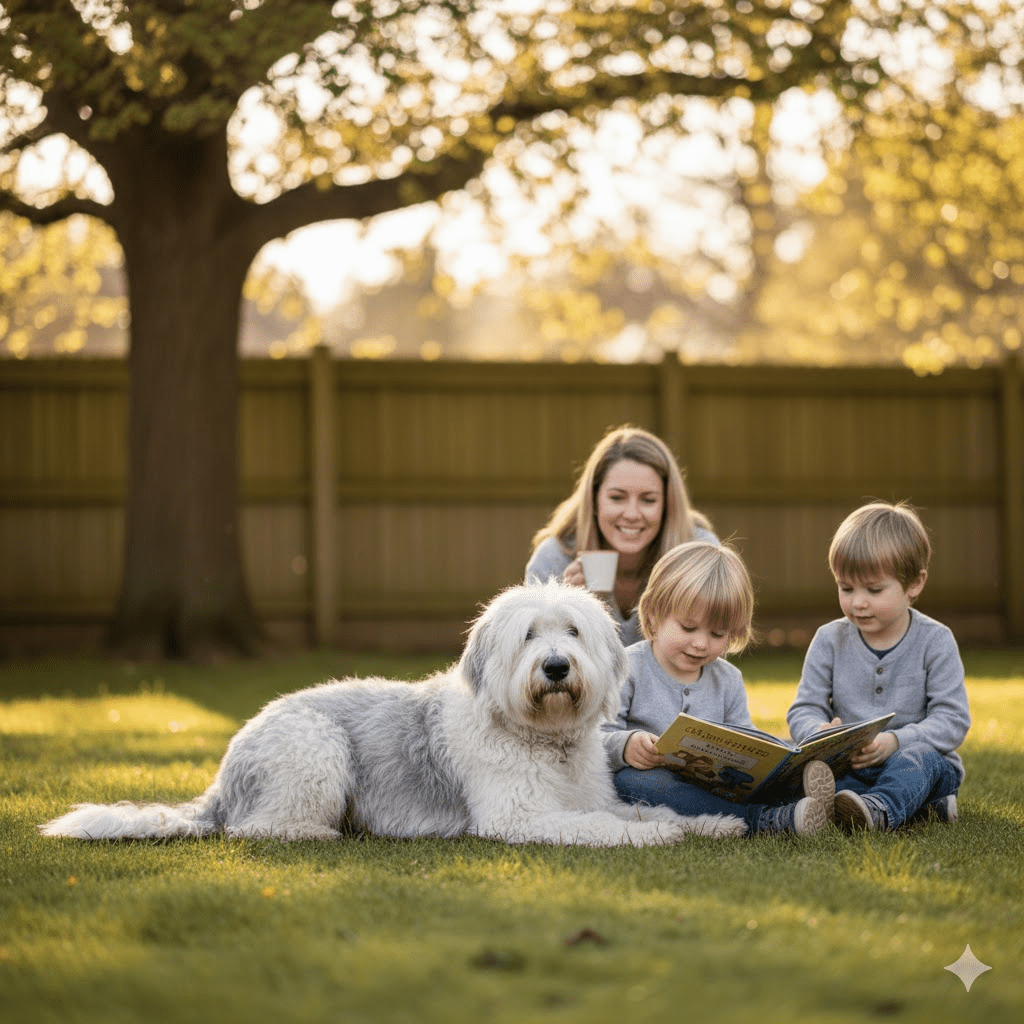The Old English Sheepdog, with its distinctive shaggy coat and often obscured eyes, presents a picture of whimsical charm and gentle companionship. This breed, instantly recognizable by its voluminous fur and playful demeanor, holds a special place in the hearts of dog lovers worldwide. Originating from the pastoral landscapes of England, these magnificent canines were initially bred for driving sheep and cattle, a demanding role that required intelligence, strength, and an independent spirit. Today, while many still exhibit their innate herding instincts, they are more commonly cherished as devoted family pets, known for their affectionate nature and patience, particularly with children. Their unique appearance, often characterized by a mop of hair falling over their eyes and a sturdy, square build, belies a warm and engaging personality. This iconic look, however, is not merely for show; it historically served a practical purpose, providing protection from harsh weather conditions and potential predators during their working days. Understanding the Old English Sheepdog goes beyond appreciating their adorable exterior; it involves recognizing the rich history, inherent traits, and specific needs that define this truly remarkable breed. Their gentle giants of the canine world offer boundless love and a unique presence in any home lucky enough to welcome them.

Historical Roots and Working Heritage
The Old English Sheepdog’s story is deeply intertwined with the agricultural history of the British Isles. Developed in the western counties of England in the early 19th century, their ancestry is believed to include the Scottish Bearded Collie and the Russian Owtchar. These hardy dogs were essential to drovers, who needed strong, resilient animals to move livestock long distances to market. Their thick coats were not just a fashion statement but a vital protective layer against the often-unforgiving English weather, shielding them from rain, wind, and cold. The shaggy hair over their eyes, while sometimes comical, also served to protect against snow blindness and dust. Their powerful build and distinctive “bear-like” gait were perfect for the arduous tasks of herding, allowing them to navigate rugged terrain with ease. This working heritage instilled in the breed a strong sense of purpose, intelligence, and a remarkable ability to work independently, qualities that continue to manifest in their behavior today. Understanding this background helps us appreciate the robustness and inherent capabilities that lie beneath their fluffy exterior, reminding us that they are more than just pretty faces; they are dogs built for a challenge.

Temperament and Family Life
Despite their robust working background, the Old English Sheepdog possesses a remarkably gentle and loving temperament, making them exceptional family companions. They are renowned for their calm disposition and patience, particularly with children, often acting as gentle guardians. Their playful nature endures well into adulthood, and they delight in being part of family activities, whether it’s a game of fetch in the yard or simply lounging on the sofa. While generally good-natured, their herding instincts can sometimes manifest in playful “nips” or attempts to “herd” family members, especially smaller children, a trait that can be managed with proper training and socialization from an early age. They thrive on companionship and can be prone to separation anxiety if left alone for extended periods, highlighting their deep need for human interaction. This sensitive side makes them incredibly loyal and devoted, forming strong bonds with their human families. Their capacity for unconditional love and their endearing antics ensure that life with an Old English Sheepdog is never dull, always filled with warmth, laughter, and a comforting furry presence.

Appearance and Grooming Needs
The most striking feature of the Old English Sheepdog is undoubtedly its lavish double coat. Comprising a harsh, shaggy outer coat and a soft, dense undercoat, it gives them their characteristic “bear-like” or “bobtail” appearance (though the tail is often docked in countries where it’s permitted). This impressive coat requires significant attention to remain healthy and tangle-free. Regular and thorough grooming is not merely cosmetic; it is crucial for preventing matting, which can lead to skin irritation, infections, and discomfort for the dog. Daily brushing, or at least several times a week, is essential to remove loose hair, dirt, and prevent knots from forming. Many owners opt for professional grooming every few months or learn to trim the coat themselves to maintain a manageable length, especially around the face and sanitary areas. Beyond brushing, occasional bathing is necessary, followed by thorough drying to prevent skin issues. While the extensive grooming requirements might seem daunting, it’s an excellent opportunity for bonding and a necessary commitment for anyone considering this beautiful breed. The effort invested in their coat care is a small price to pay for the joy and companionship these magnificent dogs provide.







